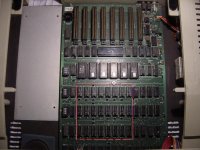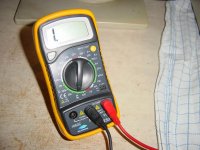Update
Update
I found somebody nearby me who maybe could fix the power supply. I turned in the power supply last week, and I got it back today. I was told the power supply wasn't dead, and it seemed like it worked fine.
Nevertheless, the 'light button' on the keyborad doesn't light up, and the two floppy disks I have doesn't spin either.
So what is then wrong?
Vifa
Update
I found somebody nearby me who maybe could fix the power supply. I turned in the power supply last week, and I got it back today. I was told the power supply wasn't dead, and it seemed like it worked fine.
Nevertheless, the 'light button' on the keyborad doesn't light up, and the two floppy disks I have doesn't spin either.
So what is then wrong?
Vifa


